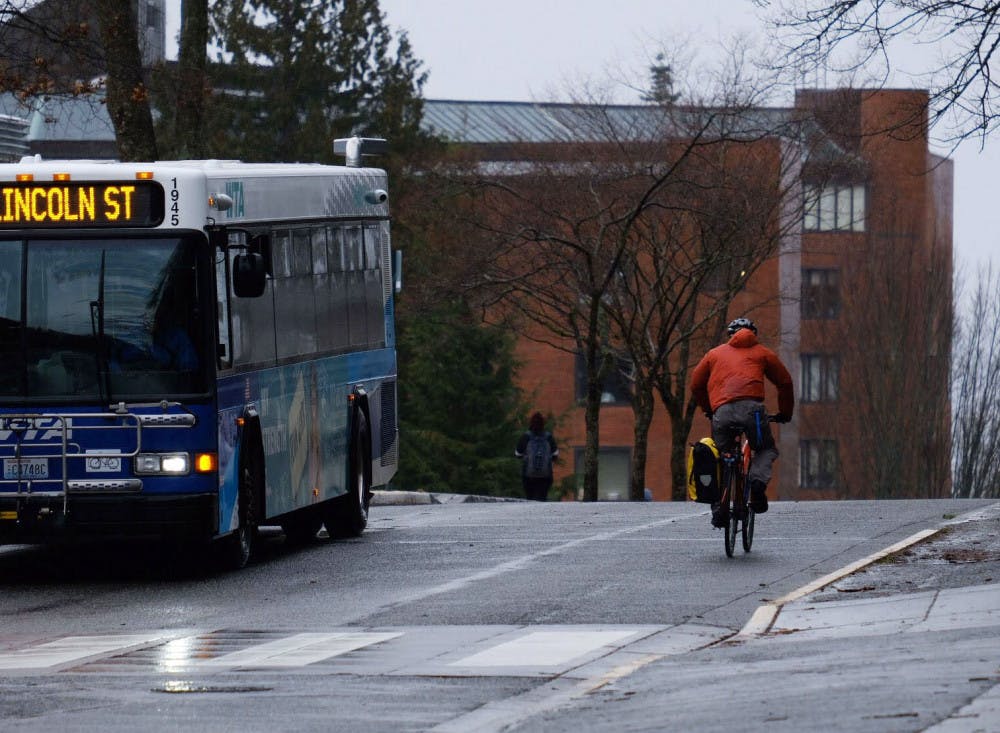This story has been edited for factual accuracy. A previous version of this story incorrectly stated that the proposed sales tax was 0.002% in the subheading and leading paragraph. The correct figure is 0.2%.
The Bellingham City Council is considering renewing a decade-old 0.2% sales tax that would raise an estimated $60 million in funds for transportation projects such as road resurfacing and bike pathing over the next decade.
Approved by Bellingham voters in November 2010, the tax expires after 10 years, with the city council discussing whether to put forth a ballot measure in 2020 for a decade-long renewal. The tax raised roughly $40 million over the past decade according to Bellingham’s website, with the renewal currently in the consulting phase of development.
The tax was introduced by the Transportation Benefit District to raise funds for infrastructure improvements. It funds road resurfacing and general, non-motorized transit improvements. Until 2016, it also funded the Whatcom Transit Authority. The district itself is governed by a board of directors made up of Bellingham City Council members and is advised by Bellingham’s Transportation Commission.
City Councilmember and Transportation Benefit District board member Daniel Hammill said funds will go toward Bellingham’s 2014 Bicycle Master Plan, a city-funded project that intends to facilitate bike commuting through a network of supportive lanes and bicycling networks.
“What we’re focusing on now, and what I’d like to see, is completing the Bicycle Master Plan in a more timely manner,” Hammill said. “Providing more than just arrows throughout the network in Bellingham, I think is a big priority.”
Hammill also said he thinks improvements made from the tax funds will promote bicycle transit throughout Bellingham.
“About 4% of our trips are by bike. That is a number that seems way too low to me,” Hammill said. “It should be around 11% or 12%. To me it’s the system that’s broken, in that we need to provide for better, safer routes for less competent riders and for those who wish to bike commute.”
Jeremy Nolan, a Bellingham-based cyclist, said the city’s attitude towards cyclists is improving. However, the locations of newer paths, like the Chestnut street lanes, can make it difficult for newer commuters.
“I think there needs to be consideration for where they put the bike lanes,” Nolan said. “They’ve added one or two new lanes on Chestnut, and I know people are happy with them, but I’ve also met one or two new cyclists that have said, ‘They’re nice, but they’re also in one of the steepest streets in the area.’”
The Transportation Benefit District’s tax also directly funds road resurfacing, which accounts for all of Bellingham’s major roads.
“Our goal for resurfacing is 5% for a year. We are nowhere near that,” Hammill said. “There are some arterials that just don’t have the proper resurfacing, and I’m absolutely in support for that as a priority … Those arterials are still the prime way that Bellingham residents get around.”
Bellingham City Engineer Chad Schulhauser said the tax successfully enhanced transit services by the WTA. The separation of the WTA from Transportation Benefit District funding allowed for the roughly $5 million in annual revenues to be focused on other areas of the Transportation Benefit District.
“The TBD provided funds for enhanced transit services, specifically Sunday service. Additionally, funds from the TBD went to capital projects designed to facilitate transit service, such as bus stop shelters,” said Schulhauser. “In 2016, the WTA said that they no longer needed support from the Transportation Benefit District, so the funds have since been divided between street overlays and non-motorized projects.”






